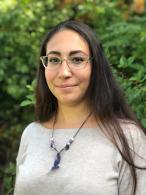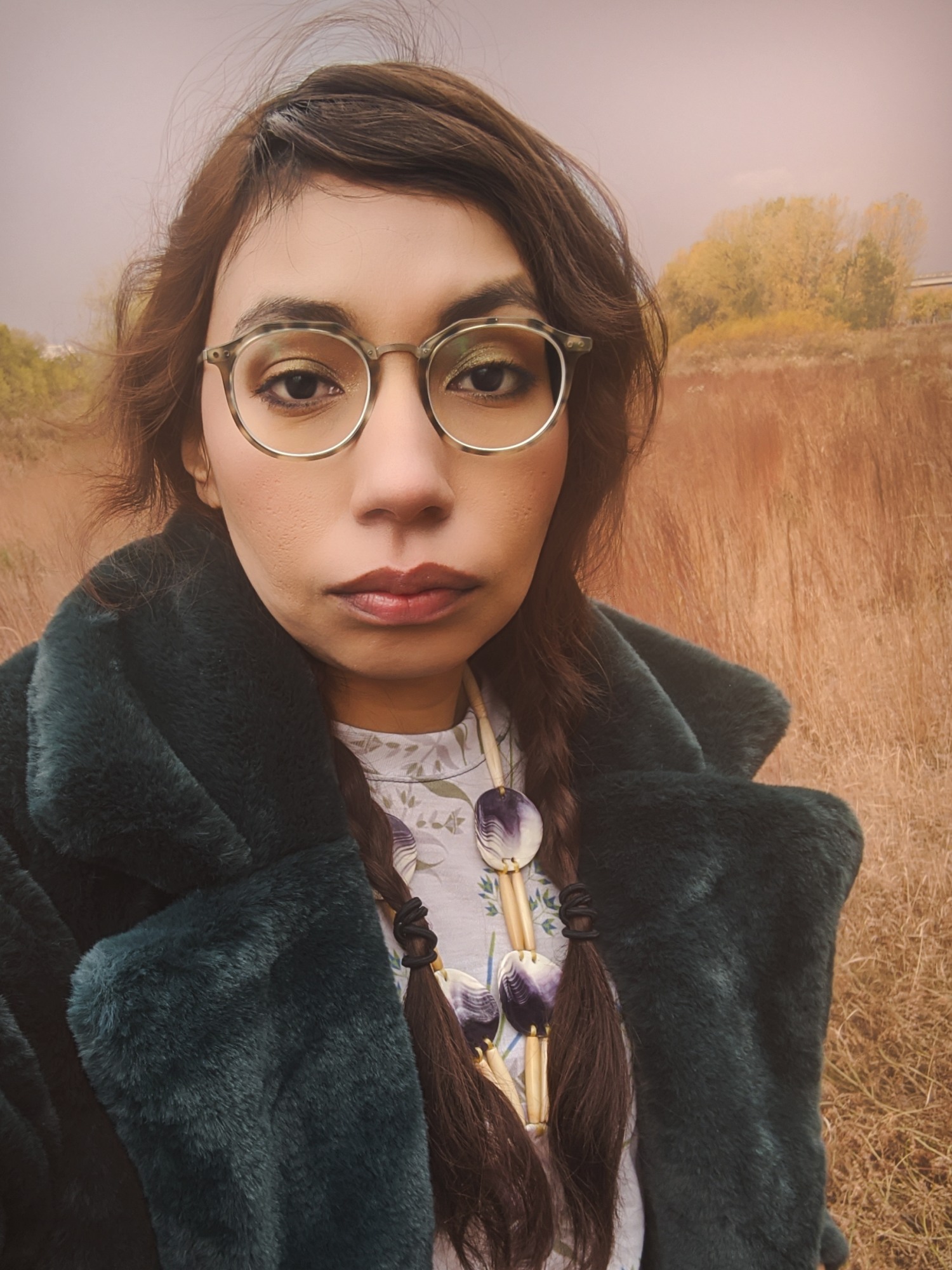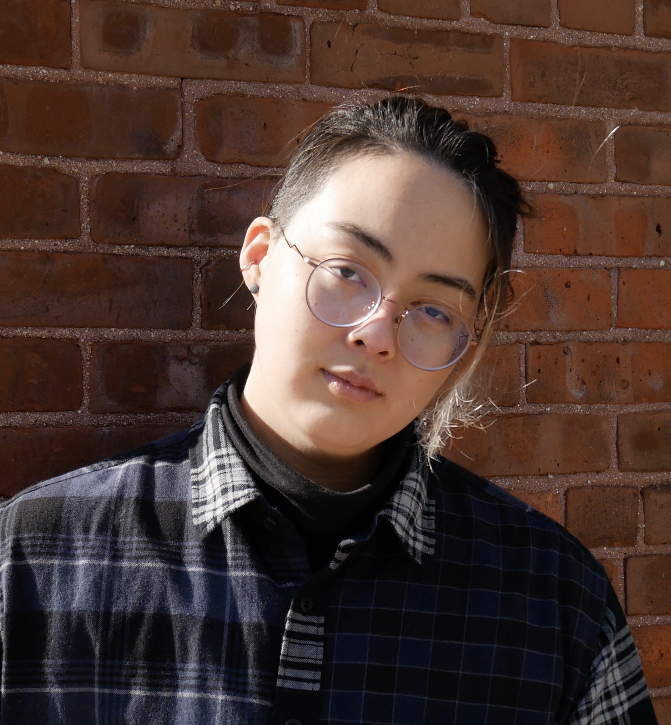 Elizabeth James-Perry is enrolled with the Wampanoag Tribe of Gay Head -Aquinnah in Massachusetts. An educator, exhibit designer and owner of Original Wampum Art, Elizabeth makes distinctive northeast wampum shell jewelry, porcupine quillwork, and northeastern twined textiles. She creates substantial heirloom quality adornment items reflecting Algonquian regional diplomatic heritage. She cultivates many of the plants used in natural dyes at her home in Dartmouth, Massachusetts; the rest are wild harvested in a sustainable way. As a member of a Nation that has long lived on, and harvested the sea, Elizabeth’s is a perspective that combines Algonquian traditional ecological knowledge, genealogy, art, and science in her ways of relating to life on the North Atlantic.
Elizabeth James-Perry is enrolled with the Wampanoag Tribe of Gay Head -Aquinnah in Massachusetts. An educator, exhibit designer and owner of Original Wampum Art, Elizabeth makes distinctive northeast wampum shell jewelry, porcupine quillwork, and northeastern twined textiles. She creates substantial heirloom quality adornment items reflecting Algonquian regional diplomatic heritage. She cultivates many of the plants used in natural dyes at her home in Dartmouth, Massachusetts; the rest are wild harvested in a sustainable way. As a member of a Nation that has long lived on, and harvested the sea, Elizabeth’s is a perspective that combines Algonquian traditional ecological knowledge, genealogy, art, and science in her ways of relating to life on the North Atlantic.
Museums that have commissioned Elizabeth’s artwork include Fruitlands Museum, Concord Museum, the New England Museum, Heritage Plantation and Gardens, New Bedford Whaling Museum, Boston Children’s Museum, Haffenreffer Museum, and the Wallraf-Richartz in Cologne Germany. Her new recording about King Philips Sash, linking the rare textile into the story of colonization of Wampanoag and Wabanaki territory will be in the upcoming Hoist/Acknowledge + Listen exhibit as part of the initiative to replace the Massachusetts state seal. Film credits include producing the background scenery photography in Dartmouth for As Nutayunean, the Wampanoag Language Reclamation film. Among the tribal mentor’s she counts her mother Patricia James-Perry, a scrimshaw artist, illustrator, and educator, along with the educators Nanepashemut Tony Pollard and Helen Attaquin, who are her cousins. She was honored to be a 38th Voyager onboard the historic Charles W. Morgan whaling vessel, as a descendant of the Gay Head crewmembers. Elizabeth continues to shore up oral traditions, additionally conducting research in local and European museums and archival collections. The artist holds a degree in Marine Science from the University of Massachusetts, Dartmouth.

 Jannette Vanderhoop is an Indigenous entrepreneur From the Wampanoag Tribe of Gay Head (Aquinnah) on the island of Martha's Vineyard. She is a professional artist, published author/illustrator, master gardener, educator, and yoga instructor. She works with children and adults of all ages teaching nature-based themes. She is a trailblazer, a serious, accomplished, and prolific artist, she sells her work at the Vineyard Artisans’ Festivals in the summers. She sits on the board of directors for the Aquinnah Cultural Center and seeks to increase global visibility and connection of Eastern Seaboard Indigenous people through museum exhibits, community workshops, art shows, school visits, and urban and rural projects. With the desire to fight stereotypes as they relate to Native people, her work is decidedly contemporary.
Jannette Vanderhoop is an Indigenous entrepreneur From the Wampanoag Tribe of Gay Head (Aquinnah) on the island of Martha's Vineyard. She is a professional artist, published author/illustrator, master gardener, educator, and yoga instructor. She works with children and adults of all ages teaching nature-based themes. She is a trailblazer, a serious, accomplished, and prolific artist, she sells her work at the Vineyard Artisans’ Festivals in the summers. She sits on the board of directors for the Aquinnah Cultural Center and seeks to increase global visibility and connection of Eastern Seaboard Indigenous people through museum exhibits, community workshops, art shows, school visits, and urban and rural projects. With the desire to fight stereotypes as they relate to Native people, her work is decidedly contemporary.
 Marlena Myles is a self-taught Native American (Spirit Lake Dakota/Mohegan/Muscogee) artist located in St Paul, Minnesota. Her art brings modernity to indigenous history, languages, and oral traditions. Growing up on her traditional Dakota homelands here in the Twin Cities, she enjoys using her artwork to teach Minnesotans of all backgrounds the indigenous history of this place we call home.
Marlena Myles is a self-taught Native American (Spirit Lake Dakota/Mohegan/Muscogee) artist located in St Paul, Minnesota. Her art brings modernity to indigenous history, languages, and oral traditions. Growing up on her traditional Dakota homelands here in the Twin Cities, she enjoys using her artwork to teach Minnesotans of all backgrounds the indigenous history of this place we call home. Makana Kushi (Kanaka ‘Ōiwi) is a 3rd year PhD student in American Studies at Brown University originally from Hilo, Hawaiʻi. Her research explores ethnic and racial hierarchies in Hawaiʻi through Hawaiian language newspapers and family and oral history. As a beneficiary of the kula kaiapuni (Hawaiian language immersion school) movement, she is dedicated to the cultivation of Indigenous resurgent educational spaces, and hopes to explore the resurgent potential of teaching Hawaiʻi history both in and outside of the academy. She is the program coordinator for Brown’s Native American and Indigenous Studies Initiative.
Makana Kushi (Kanaka ‘Ōiwi) is a 3rd year PhD student in American Studies at Brown University originally from Hilo, Hawaiʻi. Her research explores ethnic and racial hierarchies in Hawaiʻi through Hawaiian language newspapers and family and oral history. As a beneficiary of the kula kaiapuni (Hawaiian language immersion school) movement, she is dedicated to the cultivation of Indigenous resurgent educational spaces, and hopes to explore the resurgent potential of teaching Hawaiʻi history both in and outside of the academy. She is the program coordinator for Brown’s Native American and Indigenous Studies Initiative. Rae Kuruhara (Kanaka ʻŌiwi) is a 2nd-year student in the public humanities MA program interested in the potential popular media such as comics, music, fashion, and television play in preserving, depicting, and informing Indigenous cultures. Rae is a 2nd-year student in the public humanities MA program interested in the potential popular media such as comics, music, fashion, and television play in preserving, depicting, and informing Indigenous cultures. Their work questions the conventional hierarchy of literary studies and actively worked to bring graphic novels and video games into serious conversation in an effort not only to destigmatize them, but to also frame these popular art forms as more immersive bridges between oral and written storytelling traditions. Rae is the Native American and Indigenous Studies Initiative public humanities fellow and communications coordinator.
Rae Kuruhara (Kanaka ʻŌiwi) is a 2nd-year student in the public humanities MA program interested in the potential popular media such as comics, music, fashion, and television play in preserving, depicting, and informing Indigenous cultures. Rae is a 2nd-year student in the public humanities MA program interested in the potential popular media such as comics, music, fashion, and television play in preserving, depicting, and informing Indigenous cultures. Their work questions the conventional hierarchy of literary studies and actively worked to bring graphic novels and video games into serious conversation in an effort not only to destigmatize them, but to also frame these popular art forms as more immersive bridges between oral and written storytelling traditions. Rae is the Native American and Indigenous Studies Initiative public humanities fellow and communications coordinator.